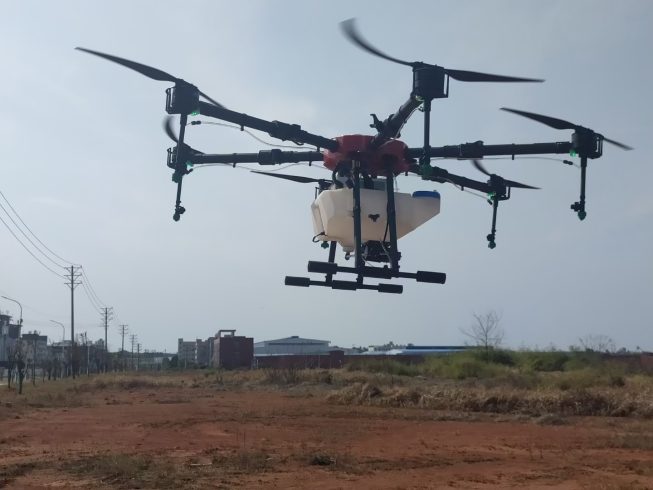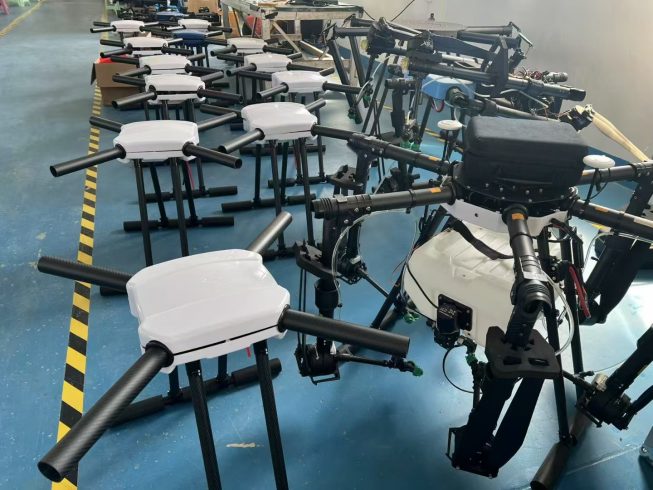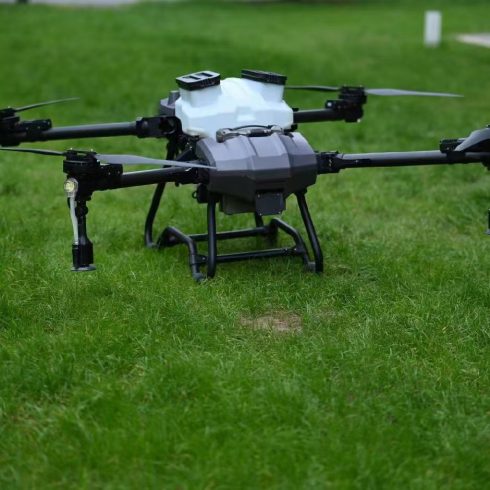
Alpine Skies, Smarter Farms: How Chinese Agri-Drones Are Elevating Austria’s Time-Honored Agriculture
Austria’s countryside is a symphony of tradition and precision—rolling vineyards climbing Alpine foothills, emerald meadows dotted with Holstein cows, and centuries-old farmhouses clinging to terraced slopes. Here, agriculture isn’t just a livelihood; it’s a point of pride, woven into the nation’s identity. Family-run farms, many tending less than 15 hectares, produce award-winning wines, fragrant herbs, and grass-fed beef that grace tables across Europe. Yet beneath this idyllic surface, challenges simmer. An aging farmer population (the average age hovers near 58), labor shortages as young Austrians move to cities, and the EU’s relentless push for greener farming practices demand innovation. It’s in this context—a place where tradition meets urgency—that an unassuming tool is taking flight: agricultural drones imported from China, quietly redefining what “smart farming” looks like in the Alps.
Austria’s Farms: Heritage Under Pressure
Austria’s agriculture is a study in balance. In the west, Vorarlberg’s valleys nurture orchards heavy with apples and pears, while Burgenland’s sun-drenched plains yield plump grapes for Grüner Veltliner. In the east, Lower Austria’s horse farms and cattle ranches evoke a bygone era. But for all its charm, farming here is grueling. “My son studied agronomy in Vienna—he helps on weekends, but most days it’s just me and my 8 hectares of vines,” says Klaus, a fourth-generation winemaker in Kamptal. “Hand-spraying fungicides takes two full days. By then, the mildew has spread. I need to work smarter, not harder.”
Climate change sharpens these strains. Warmer winters have brought new pests, like the spotted wing drosophila, decimating berry crops in Styria. Erratic spring rains delay planting, while summer heatwaves stress vineyards. Meanwhile, Austria’s commitment to the EU Green Deal means farmers must slash pesticide use by 50% by 2030—without sacrificing the quality that defines their brands. “We can’t go back to horse-drawn plows,” Klaus adds. “But we need tools that respect our land and keep us competitive.”
Drones: Tailored for Austria’s Alpine Precision
When we first explored exporting to Austria, we didn’t just see a market. We saw a landscape that demanded finesse. Austria’s farms are a patchwork of steep slopes, narrow terraces, and small, meticulously managed plots—terrain where bulky tractors damage soil structure and manual labor is slow. Our drones, engineered in China’s agricultural tech hubs, were built for this.
First, agility. With a 12-kilogram payload and a 20-minute flight time per battery, they weave through vineyard rows and around Alpine pastures without disturbing crops or livestock. “In Kamptal, vineyards climb 30-degree slopes,” explains our agronomist, Lena, who spent months testing prototypes with Austrian farmers. “Our drones hover just meters above the vines, scanning each leaf for early signs of stress. A tractor would compact the soil; a human would miss half the issues.”
Precision is their hallmark. Multispectral sensors map crop health at the individual plant level, flagging nutrient deficiencies or pest infestations before they’re visible. For Klaus’s vineyards, this meant switching from blanket spraying to targeted applications—cutting fungicide use by 45% while keeping his Grüner Veltliner free of blemishes. “The drone shows me exactly which vines need help,” he says. “I treat them, and the rest thrive naturally. My wine tastes the same, but my conscience is clearer.”
Ease of use mattered, too. Many Austrian farmers are tech-savvy but value simplicity. We designed intuitive touchscreens, pre-loaded flight paths for local crops (grapes, apples, and alfalfa), and offered training in German with local agronomists. “I was skeptical—drones felt like something out of a sci-fi movie,” admits Ingrid, who manages a family herb farm in Salzburg. “But after the workshop? I flew one myself. It’s like using a high-end camera—intuitive, powerful, and mine.”
From Shipment to Solidarity: Building Trust in Alpine Villages
Selling drones is easy. Earning loyalty? That takes heart. We learned quickly that Austrian farmers prize relationships as much as results. So we partnered with regional cooperatives, like the Weinbauernverband Kamptal, to host workshops in rustic barns, over local Schnitzel and Apfelstrudel. There, we taught farmers to analyze drone data, calibrate sensors, and even troubleshoot minor glitches. “At first, some called it ‘Chinese gadgets,’” recalls Franz, the cooperative’s president. “But when Klaus showed his reduced chemical bills? They lined up to try. Now, we have 12 members using the drones—and more asking every week.”
Locally, we stock spare parts in a warehouse near Vienna, ensuring 24-hour turnarounds for repairs. When a drone caught a gust of wind and clipped a fence last autumn, our team flew in from China to train Franz’s son on fixes—no red tape, just solutions. “You didn’t just sell us a tool,” Franz says. “You became part of our farming family. That’s what lasts in a place like this.”
Stories of Transformation: Alps, Reimagined
The impact ripples across Austria’s countryside:
-
Vineyards: Klaus now uses drones to monitor soil moisture, guiding drip irrigation and cutting water use by 30%. “My yields are stable, but my costs are down,” he grins. “My grandson, who’s studying tech in Graz? He comes home to help with the data. Maybe he’ll take over the farm someday—with drones.”
-
Herb Farms: Ingrid’s operation cut pesticide use by 50%, meeting EU eco-certification standards. “Buyers in Germany and Switzerland pay a premium for ‘drone-tended’ herbs,” she says. “It’s not just about profit—it’s about proving Austrian farming can be both traditional and sustainable.”
-
Alpine Pastures: In Tyrol, ranchers use drones to track cattle herds, spotting sick animals or strays hours faster than hiking. “No more spending afternoons searching the peaks,” says Josef, a herder since 1985. “The drone is my new mountain guide.”
More Than Exports: A Partnership for Progress
What began as a business venture has become a shared mission. Austrian farmers teach us about their unique needs: how drones handle Alpine winds, which crops (like saffron) need gentler spray settings, even which colors blend best with their stone walls (matte gray, to avoid standing out). In return, we’re refining our designs—larger tanks for vineyards, quieter motors to avoid spooking cows—to better serve Europe’s most discerning farms.
As Austria leads the EU in organic farming and sustainability, agri-drones offer a bridge between its rich agricultural past and a greener future. They’re not replacing tractors or generations of know-how—they’re amplifying it.
So when you next see a drone gliding over Austria’s vineyards or herb fields, know this: it’s more than technology. It’s a testament—to the resilience of Alpine farmers, to the power of innovation rooted in understanding, and to the idea that tradition and progress can soar together.
After all, the best advancements don’t erase the past. They lift it higher.
THE END







暂无评论内容